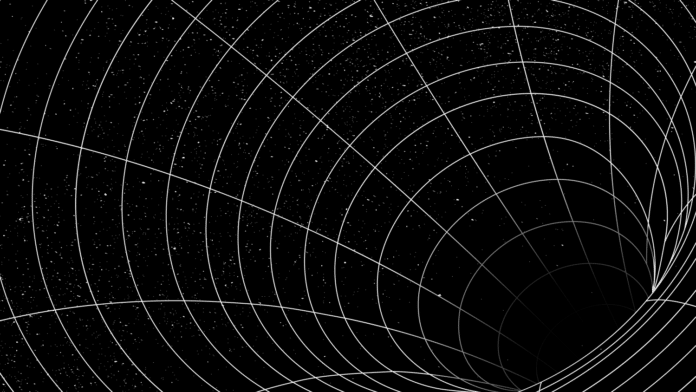Researchers at the U.S. Department of Energy’s Thomas Jefferson National Accelerator Facility are employing a method that links theories of gravitation to interactions among the tiniest particles to uncover new insights at the subatomic scale. The latest research has unveiled a snapshot of the distribution of the vital force inside the proton for the first time.
This snapshot details the shear stress that the force may apply to the quark particles constituting the proton. This innovative approach sheds light on the intricate dynamics at the subatomic level and enhances our understanding of the fundamental forces governing particle interactions.
The study’s lead author, Jefferson Lab Principal Staff Scientist Volker Burkert, emphasizes that the measurement offers valuable insights into the environment encountered by the proton’s building blocks. Protons consist of three quarks held together by a strong force. The revealed details about the distribution of the vital force within the proton provide a glimpse into the internal dynamics and conditions experienced by these quark particles.
Burkert explained, “At its peak, this is more than a four-ton force that one would have to apply to a quark to pull it out of the proton. Nature, of course, does not allow us to separate just one quark from the proton because of a property of quarks called ‘color.'”
“There are three colors that mix quarks in the proton to make it appear colorless from the outside, a requirement for its existence in space. Pulling a colored quark out of the proton will produce a colorless quark/antiquark pair, a meson, using the energy you put in to attempt to separate the quark, leaving a colorless proton (or neutron) behind. So, the 4-tons illustrates the strength of the intrinsic force in the proton.”
The recent measurement, revealing the shear stress distribution inside the proton, marks only the second mechanical property of the proton to be accurately measured. The proton’s mechanical properties encompass internal pressure (estimated in 2018), mass distribution (physical size), angular momentum, and shear stress (demonstrated in this study).
Remarkably, this achievement is attributed to a prediction made half a century ago and the utilization of data collected over the past two decades, underlining the enduring significance of earlier scientific hypotheses and the persistence of data collection efforts.
The decades-old data crucial to this study originated from experiments conducted at Jefferson Lab’s Continuous Electron Beam Accelerator Facility (CEBAF), a Department of Energy (DOE) Office of Science user facility. In a typical CEBAF experiment, an energetic electron engages with another particle by exchanging a packet of energy and a unit of angular momentum known as a virtual photon. The electron’s energy determines which particles it interacts with and how they respond.
In this experiment, a force much greater than the four tons required to extract a quark/antiquark pair was applied to the proton. This force resulted from the interaction of a highly energetic electron beam with the proton in a liquified hydrogen gas target.
Latifa Elouadhriri, a Jefferson Lab staff scientist and co-author, said, “We developed the program to study deeply virtual Compton scattering. This is where an electron exchanges a virtual photon with the proton. And in the final state, the proton remained the same but recoiled, and you have one real, highly energetic photon produced, plus the scattered electron.”
“At the time we took the data, we were not aware that beyond the 3-dimensional imaging, we intended with this data, we were also collecting the data needed for accessing the mechanical properties of the proton.”
The specific process involved in this study, deeply virtual Compton scattering (DVCS), holds a connection to how gravity interacts with matter. The general connection between DVCS and gravitational interactions was initially articulated in the 1973 textbook “Gravitation” by Charles W. Misner, Kip S. Thorne, and John Archibald Wheeler, who stated, “Any mass-less spin-2 field would give rise to a force indistinguishable from gravitation because a mass-less spin-2 field would couple to the stress–energy tensor in the same way that gravitational interactions do.”
Building on this concept three decades later, theorist Maxim Polyakov laid the theoretical foundation for the link between the DVCS process and gravitational interaction.
Burkert explained, “This breakthrough in theory established the relationship between the measurement of deeply virtual Compton scattering to the gravitational form factor. And we could use that for the first time and extract the pressure that we did in the Nature paper in 2018, and now the normal force and the shear force.”
Scientists are planning to extract the information they need from the existing DVCS data to determine the proton’s mechanical size first. They also hope to take advantage of newer, higher-statistics, and higher-energy experiments that continue the proton’s DVCS research.
In the meantime, the study co-authors have been amazed at the plethora of new theoretical efforts, detailed in hundreds of theoretical publications, that have begun to exploit this newly discovered avenue for exploring the mechanical properties of the proton.
Journal Reference:
- V. D. Burkert, L. Elouadrhiri, F. X. Girod, C. Lorcé, P. Schweitzer, P. E. Shanahan. Colloquium: Gravitational form factors of the proton. Reviews of Modern Physics, 2023; 95 (4) DOI: 10.1103/RevModPhys.95.041002
